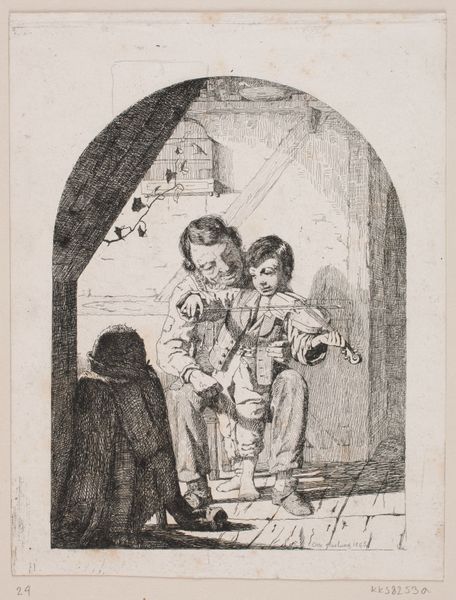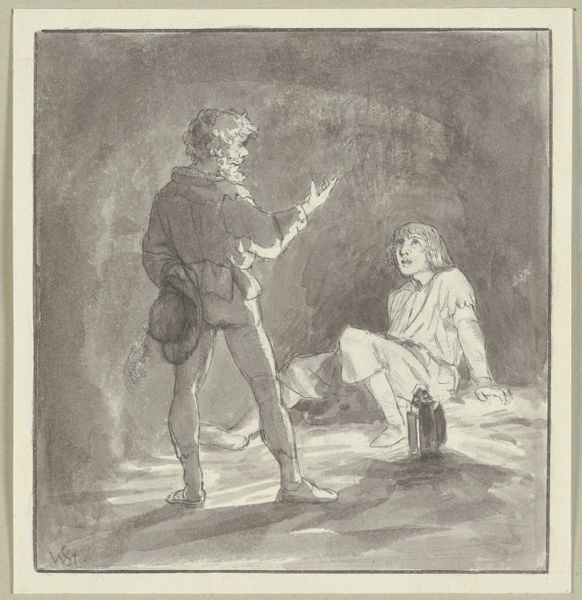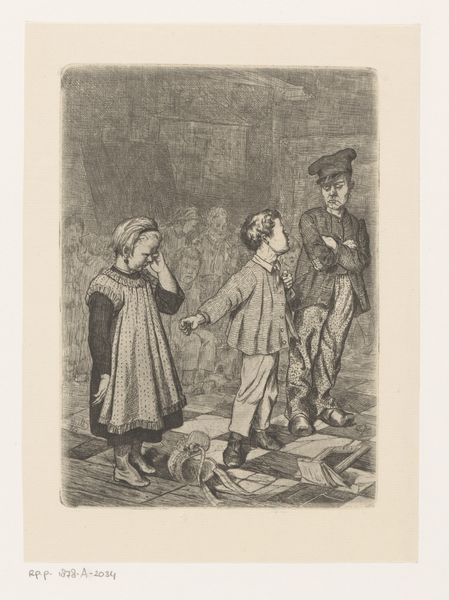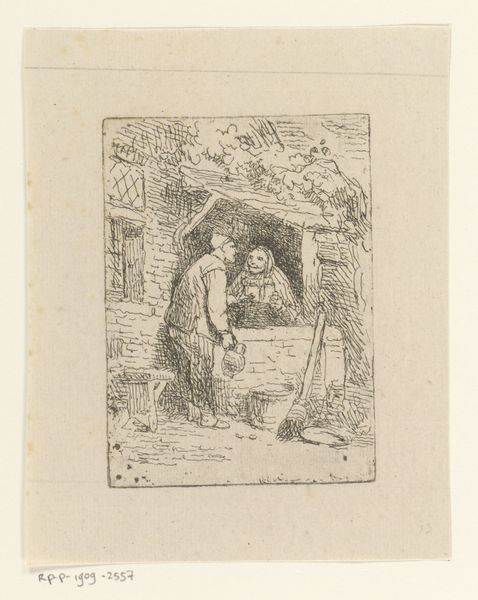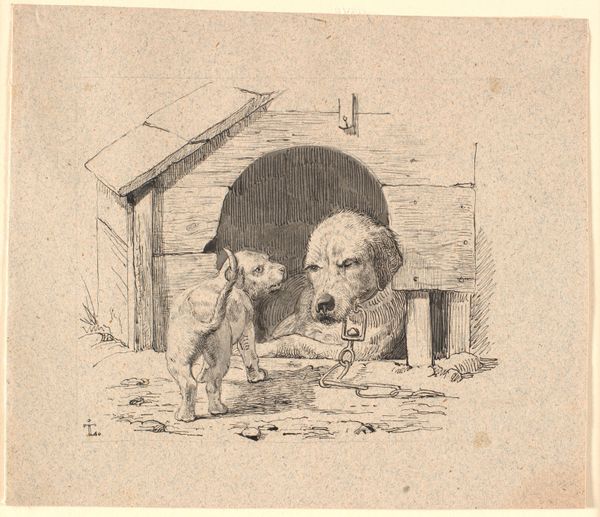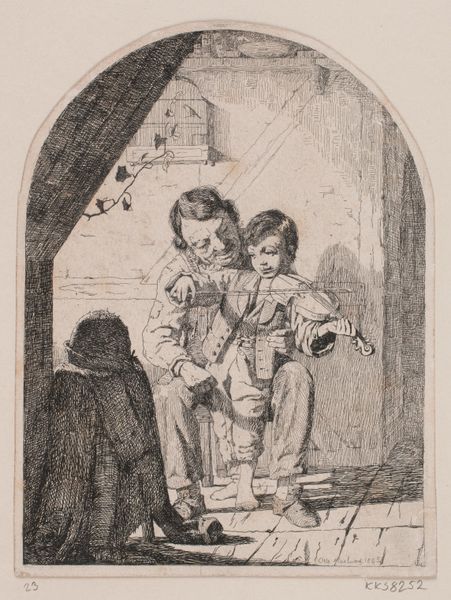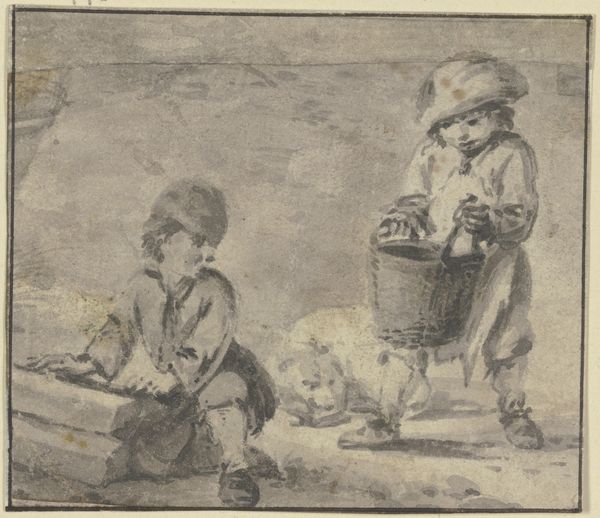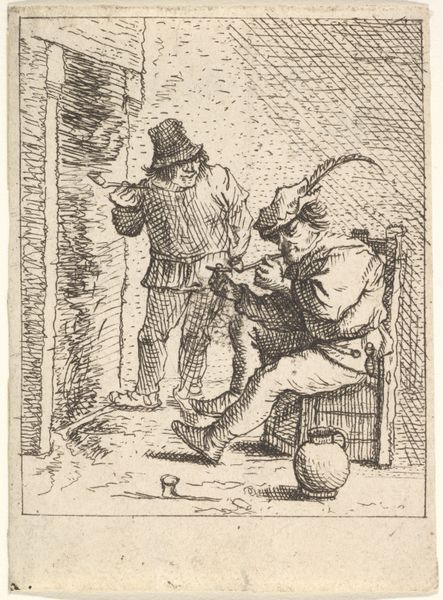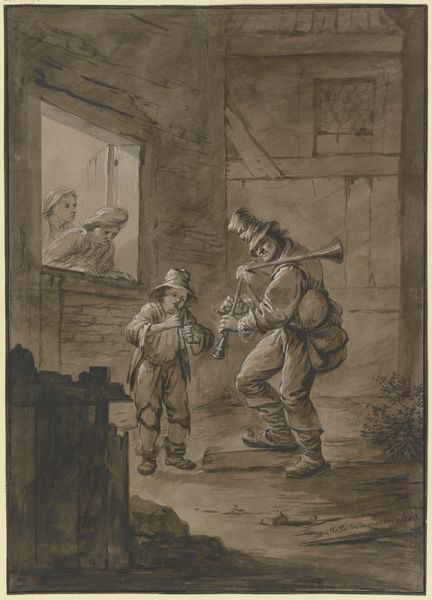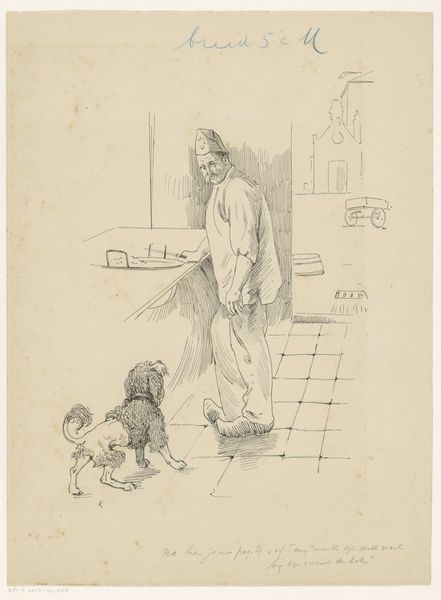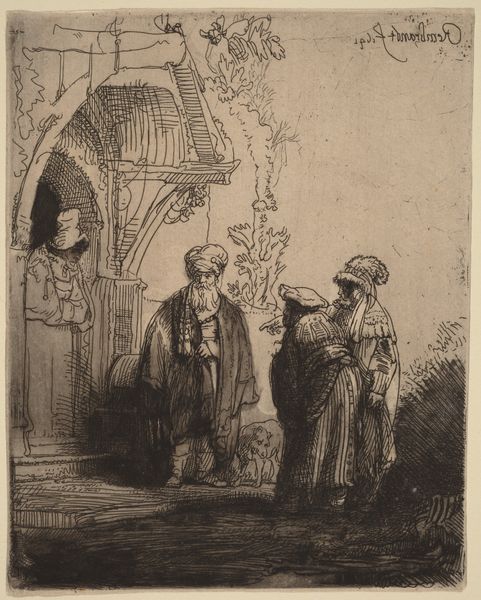
Knabe, einem anderen Knaben an der Straßenecke auflauernd Possibly 1872 - 1874
0:00
0:00
Copyright: Public Domain
Curator: Let's discuss this intriguing pencil and chalk drawing by Otto Scholderer, likely created between 1872 and 1874. It is titled "Knabe, einem anderen Knaben an der Straßenecke auflauernd," which translates to "Boy Lying in Wait for Another Boy on the Street Corner". It now resides here at the Städel Museum. Editor: My first impression is that the limited palette lends the scene a subdued, almost melancholic quality. The circular framing focuses our attention, creating a sense of peering into a private moment. Curator: It's crucial to remember that Scholderer, though associated with the Leibl Circle and often considered a Realist painter, had roots in Romanticism. Genre scenes like this allow for exploration of social dynamics of the time. How might this interaction reflect power structures or the lives of working-class children in 19th century Germany? Editor: Interesting. Visually, I am drawn to the contrast between the stillness of the standing boy and the crouched posture of the other. The artist’s marks build convincing forms that, while minimal, allow the drawing to suggest three-dimensional space. It brings attention to what it means to draw, period. Curator: Exactly. Scholderer subtly highlights the vulnerability of children, placing them in positions ripe for symbolic interpretation. One can speculate whether there is a socio-economic distinction being expressed through dress or stance, or is it that of urban dynamics related to status and respect. Editor: The hatching technique used to describe the shadows seems particularly effective in conveying the rough texture of the brickwork behind the waiting boy. It emphasizes the boy as subject versus only his surroundings, as if he were a symbol for a part of the very landscape itself. Curator: Absolutely. Consider also the gaze. One boy looks ahead, while the other focuses directly on his peer. This directness speaks to agency—or lack thereof, depending on the interaction to come. Perhaps through the depiction of childhood encounters, Scholderer is making observations on societal expectations. Editor: The work's intimate scale invites close viewing. Through careful study, Scholderer’s skillful command of tonal variation using simple pencil and chalk enables us to decode deeper relationships beyond the face-value of the image. Curator: Agreed, understanding the sociopolitical landscape offers richer readings. While his artistry undeniably captivates the eye, understanding how social and personal contexts intersect to produce something profound offers greater insights into art history itself. Editor: Ultimately, Scholderer’s attention to line, shadow, and overall form coalesce to generate a disquieting, psychologically intense street scene, inviting the viewer to contemplate the intricate layers embedded in a seemingly innocent observation.
Comments
No comments
Be the first to comment and join the conversation on the ultimate creative platform.
